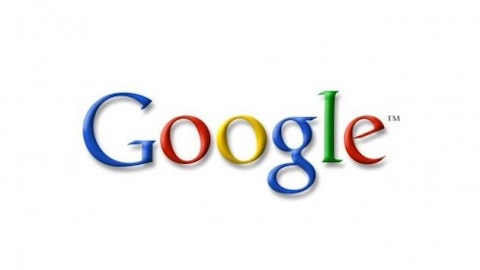A story in the news yesterday shows you how risky it can be to buy low-yielding bonds even if there’s no chance the company will fail to make the interest payments. The Financial Times reported yesterday that some bonds of consumer-electronics giant Apple Inc. (NASDAQ:AAPL) have fallen as much as 9% in their first six weeks of trading. In case you happen to be an Apple bondholder – rest assured. Apple isn’t going out of business. The reason Apple’s bonds are down has nothing to do with the company itself. Apple is a very safe company. There’s virtually zero chance it will fail to repay its debts. It has $145 billion in cash and just $17 billion in debt.

The conventional explanation
Most people will point their fingers at the U.S dollar. A sudden weakening of the dollar will surely translate into a loss to dollar- denominated bonds. That’s Economics 101. Some people think it’s the sudden hike in the interest rate that’s beating down the price of bonds. Interest on a 10 year U.S backed notes jumped from 1.7% only a month ago, to 2.2% today. That’s a furious pace.
The real explanation
I believe that the main reason investors are now sitting on a 9% loss is that they simply paid too much for Apple Inc. (NASDAQ:AAPL)’s bonds, and the market is correcting that mistake.
Apple had zero debt until it sold $17 billion worth of bonds six weeks ago. They all had very low yields. The bonds that fell 9% were 30-year bonds that yielded 3.85%. That’s way too low for a 30-year bond. I bet investors who bought Apple’s low-yielding bonds thought it was OK they weren’t making much money because Apple Inc. (NASDAQ:AAPL)’s so safe, at least they wouldn’t lose any money. Now they’re sitting on a 9% loss. Again, there’s virtually no chance Apple will fail to repay its debts. But now, bondholders might have to wait 30 years to get their 9% back. These are the same folks who’ve been bidding up the U.S. Treasury market. These folks have been talking down the price of gold and gold-mining stocks. Even now, they are paying much more than par for dodgy U.S. corporate bonds. At their most recent peak, only a month ago, these bond lovers were paying, on average, an all-time-record price above par ($106 last month) for junk bonds. Remember… these pieces of paper are usually priced by the creditworthiness of the company that issues the debt and the likelihood of lower interest rates in the future.
Apple isn’t alone
It’s important to remember that Apple Inc. (NASDAQ:AAPL) didn’t need all that cash. The company took it simply because it was offered to it at an incredibly cheap price. By issuing debt, Apple has joined other mega companies who benefited from this trend of bond buying. In May, Berkshire Hathaway Inc. (NYSE:BRK.A), whose cash hoard reached a record $49.1 billion in its first quarter, sold $500 million of 1.3%, five-year debt with a 57 basis-point spread and an equal portion of 4.3%, 30-year bonds with a relative yield of 135 basis points. Remember, Berkshire Hathaway Inc. (NYSE:BRK.A) doesn’t need all that cash – it took it because it could.
Another large issuer from last month is General Motors Company (NYSE:GM). The American auto company issued $1 billion of 2.75%, three-year notes yielding 241 basis points more than similar-maturity Treasuries and $750 million each of 3.25%, five-year securities with a relative yield of 250 basis points and 4.25 percent 10-year bonds at a 247 basis-point spread, according to Bloomberg data.
Historical perspective
Over the last 20 years or so, the average high-yield bond has paid about 500 basis points (5%) more income than similar treasury bonds. The panic in the fall of 2008 pushed the “spread” – the difference between treasury yields and high-yield bond yields – up to nearly 2,000 basis points. In other words, high-yield bonds paid almost 20% more than treasuries.
When yields go up, bond prices go down. In the fall of 2008, the prices of these high-yield bonds plummeted. The credit-market panic meant companies were unable to issue new debt. After all, who can afford to borrow money at 20% interest rates? Big bondholders, like pension funds and institutional investors, were worried they’d soon be holding an empty bag, so they dumped their bonds into the market. The massive wave of selling pushed prices even lower. But then, a swift recovery happened in the bond market and prices have been skyrocketing ever since.
My Foolish take
I believe future generations will view the current market for high-yield bonds as a prime example of the madness that has gripped the world’s markets since September, when the Federal Reserve began the monthly printing and purchase of $85 billion worth of government debt. Apple Inc. (NASDAQ:AAPL) is just one good example of a company whose business will do just fine while its bondholders will not.
Shmulik Karpf has no position in any stocks mentioned. The Motley Fool recommends Apple, Berkshire Hathaway Inc. (NYSE:BRK.A), and General Motors Company (NYSE:GM). The Motley Fool owns shares of Apple Inc. (NASDAQ:AAPL) and Berkshire Hathaway.
The article An iLoss to Apple Bondholders originally appeared on Fool.com.
Shmulik is a member of The Motley Fool Blog Network — entries represent the personal opinion of the blogger and are not formally edited.
Copyright © 1995 – 2013 The Motley Fool, LLC. All rights reserved. The Motley Fool has a disclosure policy.




